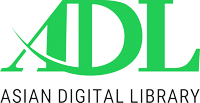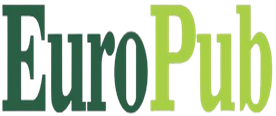A comparative study of similar narratives between television dramas, newspapers, and Twitter: An integrated critical discourse analysis
DOI:
https://doi.org/10.71085/sss.04.03.323Keywords:
Critical Discourse Analysis, Framing, Narratives, Interpersonal Issues, Dramas, Print Media and Social MediaAbstract
This study delves into the difference of narratives’ representations between Pakistani television dramas, and both social and print media (Twitter and newspaper). Although most of the Pakistani dramas try to shape the perceptions and cultural understandings in a positive way, these narratives are often contradicted by the real life gruesome incidents that are covered by social and print media. Therefore, by following Entman’s Framing Theory (1993) and Fairclough’s Three-Dimensional Model (1989), this research aims to provide a comparative analysis of the interpersonal issues between television dramas, and both social and print media. This study wields qualitative method to focus on the critical discourse and framing of two Pakistani dramas: Yakeen Ka Safar and Raqs-e-Bismil, one newspaper: Dawn, and one platform of social media: Twitter. In short, the research demonstrates the comparison of the portrayal of the interpersonal issues between television dramas alongside social and print media.
Downloads
References
Alkaff, S. & Mclellan, J. (2017). “Same news, different stances”? A comparative media discourse investigation of hard news texts in the New Straits Times and Berita Harian. Social Sciences & Humanities, 25(2), 511-540.
Bibi, R. & Ahmed, T. (2025). A thematic analysis of Dawn news articles concerning Brown and Levinson’s Theory of Politeness. Social Sciences and Humanity Research Review, 927-938.
Entman, R. M. (1993). Framing: Toward clarification of a fractured paradigm. Journal of Communication, 43(4), 51-58. http://dx.doi.org/10.1111/j.1460-2466.1993.tb01304.x
Hayat, N., Zahra, M. F., & Ali, A. S. (2022). Politics in the digital age: Measuring the impact of Twitter on Pakistani youth, Journal of Positive School Psychology, 6(9), 2267-2278.
Hussain, S. (2022). Exploring double consciousness: Capitalist attitude and white supremacy in drama serial Parizaad. Journal of Social Sciences Review, 2(2), 29-38. https://doi.org/10.54183/jssr.v2i2.31
Khan, M. K., Ali, G., Malhi, A. T., & Shahid, J. (2023). Analysis of diffusion of misinformation on Twitter: Effects of fake news among youth of Pakistan. Online Media & Society, 4(3), 45-57.
Phillips, N., Lawrence, T. B., & Hardy, C. (2004). Discourse and institutions. Academy of Management Review, 29(4), 635–652. https://doi.org/10.2307/20159075
Ramzan, M., Awan, H. J., & Maharvi, H. (2020). Comparative pragmatic study of print media discourse in Baluchistan newspapers headlines. Al Burz, 12(1), 30-44.
Saqib, M., Shah, S. T. A., Sheikh, S. M., & Mehmood, N. (2023). Assessing the influence of social media on attitudes towards violence against women: A mixed-methods approach. Journal of Asian Development Studies, 12(3). https://doi.org/10.62345/jads.2023.12.3.112
Shamsi, Z. U. H. (2023). Efficacy of social media in wars and conflicts: Brief review of Russia-Ukraine war. CARC Research in Social Sciences, 2(4), 202-207.
Ullah, I. (2024). TV drama as a cultural medium: Critical Discourse Analysis of Pakistani Drama Mere Pass Tum Ho regarding extra marital affairs. Journal of Creative Arts & Communication, 1(1), 29-34.
Van Dijk, T. A. (2006). Discourse and manipulation. Discourse & Society, 17(3), 359–383.
Van Leeuwen, T. (2008). Discourse and practice: New tools for Critical Discourse Analysis. Oxford University Press. https://doi.org/10.1093/acprof:oso/9780195323306.001.0001
Wodak, R. & Meyer, M. (2009). Methods of Critical Discourse Analysis (2nd ed.). SAGE Publications.
Zarina, A. (2025). The role of language in social media communication. Modern Education and Development, 181-185.
Downloads
Published
Data Availability Statement
Data sharing not applicable to this article as no datasets were generated or analyzed during the current study.


































